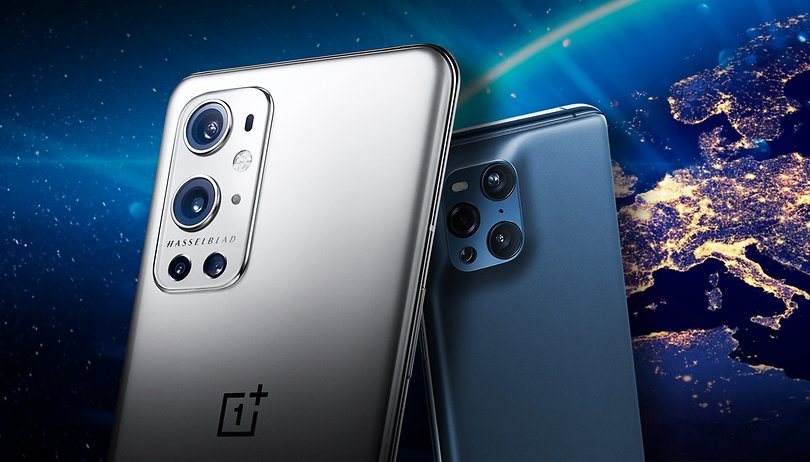Can OnePlus make it in Europe on their own?


OnePlus has had a good start to 2021. The smartphone manufacturer's latest quarterly figures were better than expected, well in the positive territory. Those figures certainly reflected the results of a strategic turnaround that began more than a year ago by shifting to the premium market and the release of the Nord range. But isn't this grand dream going to end up cannibalizing Oppo's market share, which is also OnePlus' sister company?
Last week, OnePlus graciously scheduled some time for me to chat with Tuomas Lampen, Head of Strategy for OnePlus Europe. The initial purpose was to discuss OnePlus' positive quarterly results for Q1 2021. The manufacturer recorded a 388% growth in sales and 286% growth in revenue compared to Q1 2020.
While we're on the subject of balance sheets, I also wanted to see the 2020-2021 period as a period of reinforcement, at least in the collective imagination, of OnePlus' gravitation towards Oppo. Won't these ambitions to bolster its image as a top player in the European market hit a brick wall due to the close resemblance to Oppo products, which is also part of the BBK group?
The numbers don't lie...
The figures mentioned above and on which OnePlus has obviously focused its communication are undeniably positive. However, we have to bear in mind that these are just percentages and not concrete numbers. A 300% increase compared to what? We don't know, and the smartphone market is still below 2019 levels, i.e. pre-Covid-19, despite experiencing a nice rebound at the end of 2020 while carrying that momentum over into Q1 2021.
According to a Counterpoint study done on April 27, OnePlus still recorded a growth of 85% in its market share in Europe, going from 1% to 2% of market share in Q1 2021 in the corresponding period last year.
Proportionally similar growth numbers were seen at Oppo, which went from 3% to 6% market share, making it the 4th largest smartphone manufacturer in Europe over this period. However, it still lags far behind the likes of Xiaomi, Apple, and especially Samsung.

Tuomas Lampen did explain to me the importance of OnePlus' diversification strategy in dissecting these results. Certainly, the Q1 balance sheet mostly reflected the recently released flagship models comprising the OnePlus 9 and OnePlus 9 Pro, to the tune of 65% of the total revenue recorded. But the growth also saw the new Nord range play a key role, beginning with the OnePlus Nord that was released last July (making up 35% of revenue) in his explanation.
"We have reached a level where we can proudly compete with other market giants. We have reached a degree of maturity in the high-end market," says the head of OnePlus before recalling the importance of the Nord catalog and in general, the diversification of the OnePlus portfolio in a 1 + X + N strategy that has become an obligatory rite of passage for every manufacturer.
... but they don't tell the whole story
This "step-by-step strategy", as Tuomas Lampen described it, has nevertheless taken root in spite of the mixed reception received by the OnePlus Watch or the OnePlus Band. The latter had suffered from accusations of being nothing more than a re-badged version of the Oppo Band due to the extremely close similarities between the two. The same goes for the OnePlus N100, which was considered to be a clone of the Oppo A53.
And this is where the "Oppo-fication" term comes in. In my opinion, this is nonsense but I'll come back to that. On the other hand, it's hard to deny that Carl Pei's departure which happened last October, Pete Lau's being reassigned to oversee Oppo and OnePlus, the rebranding issue, and poor software updates for the Nord models were all factors that have led to the seeming deterioration of the company.
The Nord range is famous for having late software updates, if any, and these were the ingredients that ended up as the perfect storm for the once-solid OnePlus identity toward that of a washed-up company that is nothing more than a duplicate platform for Oppo.
I'm not the only tech journalist to play the role of Nostradamus, far from it. But to talk about the apparent "Oppo-fication" of OnePlus in 2021 is pure nonsense. I say nonsense, because this is total hogwash!
Seriously, I don't want to insult your knowledge of the smartphone market, but I have to remind you of the basics for the few of you who have not been keeping abreast with the latest developments. OnePlus is a satellite brand of Oppo, and both are under the BBK Electronics group. Historically, OnePlus is Oppo's attempt to respond to Xiaomi, which has disrupted the smartphone market with its 100% online business model. I'll let my fellow Tech Altar member explain this better than I can in the video below.
OnePlus is a "sub-brand" first and foremost, comprising industry insiders and enthusiasts. We speak of "brand ambassadors" here as well, where the uptake of their products become more and more popular courtesy of their strong brand image. This in turn transforms their catalog from an online-only platform to the mainstream market, making it no longer an online alternative but an equivalent with the likes of Oppo and its affordable catalog.
It's only natural to see both Oppo and OnePlus starting to overlap, as the two brands share their R&D capabilities. "A fantastic and beneficial opportunity," according to Tuomas Lampen, "to be able to share our R&D resources when you see the giants we face."
"Our community expects us to offer ever better products while remaining cheaper than the competition, which is impossible if we did everything on our own." But the manager immediately qualifies that "we operate completely independent of each other and have our teams for the creation and sale of our devices."
The apparent similarities between the two do raise the question of relevance - is it worth having two very similar brands that offer very similar products at very similar prices? In other words, by becoming more and more mainstream, transforming into a full-fledged brand with a complete catalog and ecosystem, isn't OnePlus shooting itself in the foot?
What arguments can OnePlus make against Oppo?
Personally, I think that if OnePlus wants to continue its expansion strategy and become a mainstream brand while ditching its enthusiast leanings, it has to differentiate itself from Oppo. What good would it do for the BBK group to have two brands that cannibalize each other?
Even if they have a similar catalog, they can still exist as long as they maintain a sufficiently distinct brand image from each other. Fanboyism is the main catalyst for achieving success in the tech market, look at Apple's iSheep or Xiaomi's Mi-fans.
But what makes OnePlus stand out from the crowd? According to Tuomas Lampen, there are two key elements: community and OxygenOS. The community aspect of OnePlus' marketing is indeed something that Oppo has less control over, at least in Europe.
Oppo is all about bling, advertising space at the French Open, and flagship stores all over the world. OnePlus is the company that plays the role of a goofy, young, technocentric start-up. "It's our interactions, our collaboration with members, we listen to them and take their feedback into account."
The second pillar of OnePlus' independence, according to Tuomas Lampen is the software. "OxygenOS is one of the strongest elements we have and with nearly 400 optimizations based on user feedback, it stems from the community element. This ensures we have control over the user experience to deliver the best possible one."
While OxygenOS 11 is very divisive, because it breaks away in part from the "stock" and pure legacy of OnePlus' previous OS versions, it's my current favorite Android skin. That's why the rumors of HydrogenOS being dropped in favor of ColorOS for OnePlus smartphones in China have me apprehensive.
The fact that Tuomas Lampen is so insistent on the importance of OxygenOS in Europe is reassuring. Anyway, the real problem with OxygenOS is not so much that OnePlus will be absorbed by Oppo, but that OnePlus will end up like another Oppo. If that happens, it will be a huge loss to the smartphone world after seeing how far OnePlus has come.



















They seem to be such bumblers I don't see it happening.
It's Verry nice